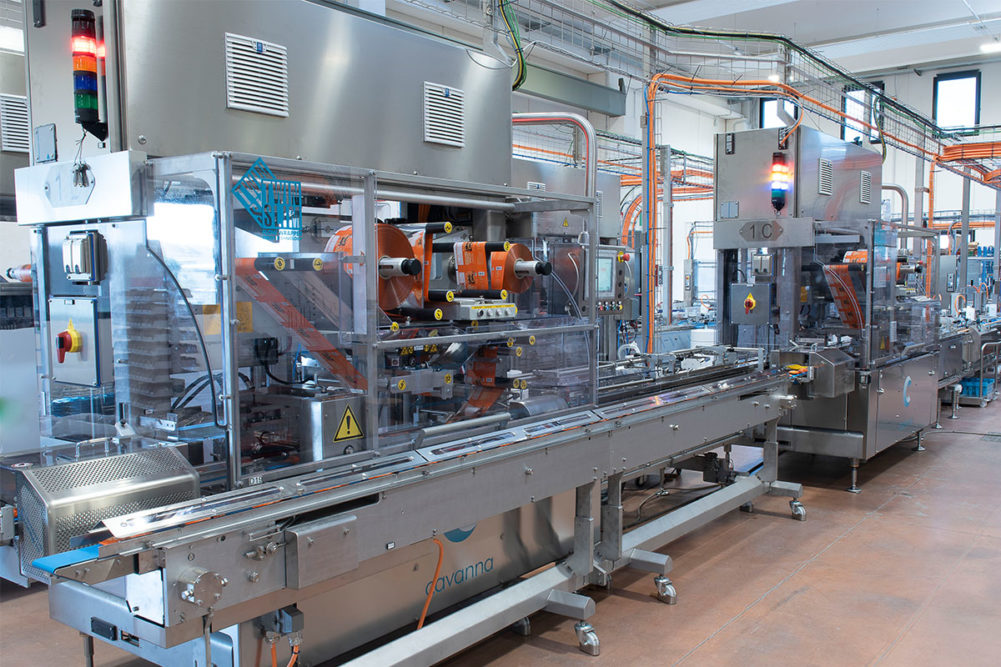Once baked foods make it out of the mixer, through the oven or fryer, get their finishing touches and cool down, all that’s left is the packaging. The hard part is done, right? But as every baker knows, things can go wrong at the end of the line.
Bottlenecks with packaging materials, product, labor and more can slow and even stop the process. That’s the very thing bakers want to avoid.
“You know it’s only going to run for so long before debris causes an interruption. You know that an event — a motor can go bad, the product is out of spec and creates a jam or a downtime — can happen, and these things are predictable,” said Bill Kehrli, vice president of sales and marketing, Cavanna Packaging USA. “You may not know when, but you know statistically over the course of one shift, you may have, on average, three or four events.”
It’s these “predictable failures” that are actually keys to avoiding bottlenecks in packaging. Deep knowledge about how the line operates, what could go down and when, and executing best practices can smooth out the rough patches and avoid costly stops.
The first step in setting up a new bakery packaging line is to gather all the pertinent information about what the baker wants to accomplish, what baked foods will be produced and how they will be packaged.
“You need to understand their current process and what their goal is,” said Josh Becker, product manager, bakery/confection, at Harpak-ULMA. “Is their goal reducing labor, improving efficiency or increased production of their packaging line?”
Bakers need to be clear about what will be running on the line. Although consumer tastes and products can change quickly, being able to look down the road to prepare for contingencies is critical to investing in the right equipment.
“It’s amazing how many times we’re either in the middle of the process building equipment or we’ve already installed it and somebody comes back and says ‘Yeah, we need to run this now,’ ” said Dennis Gunnell, president, Formost Fuji. “With today’s lines, most of them want automation and high speed. Those things put you into a position where you may not have that flexibility, or it may not be easy or inexpensive to change that.”
Designing the right packaging line means not only taking into account a baker’s needs and the space available for packaging, it requires testing to determine how fast the machines can handle products.
“If you are doing a new line, critical for any customer is to make sure we have tested their product completely,” said Mark Finneran, sales business development, Niverplast.
Testing the film on the equipment also ensures it will run smoothly.
“The film is normally the bottleneck on the line, not the equipment,” Mr. Kehrli said. “So we test the film, evaluate that for speed, and then we look at alternatives based upon product film, space, customers’ understandings and what their learnings are on the product.”
Richard Kirkland, president, LeMatic, said planning and leaving enough time for the installation “from line shutdown to removing old equipment to operator and maintenance training” ensures a smooth ramp-up.
Once the line is installed, it should be evaluated to ensure everything is aligned and performing at optimal efficiency.
“Fine-tuning the running speed parameters of the units can be a challenge,” said Eric Morin, project manager/application engineer at AMF Bakery Systems. “The time it takes a bag to inflate, as an example, is very sensitive to the speed at which a bagger runs. Many other parameters need to be looked at to obtain the best results.”
Space for packaging in a facility can be limited, forcing equipment manufacturers to get creative and still keep lines running optimally.
“A lot of times, we’ll do small elevators to go up and over,” said John Weddleton, product manager, automation, Harpak-ULMA. “Sometimes there’s an aisle that has to remain open so they go up and over so traffic can keep moving in that area. That’s definitely one thing we seem to be doing more and more: incline conveyors, elevators. The other thing: utilizing the same space for infeed and outfeed conveyors.”
Mr. Kehrli said Cavanna’s Twin Slim Wrapper is a space-saving device in demand lately. It allows bakeries to put two wrapping systems in the footprint of one.
This article is an excerpt from the November 2021 issue of Baking & Snack. To read the entire feature on Bottlenecks, click here.






